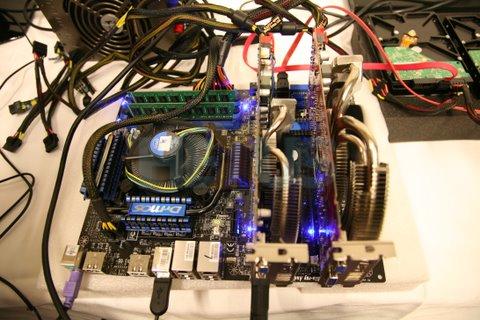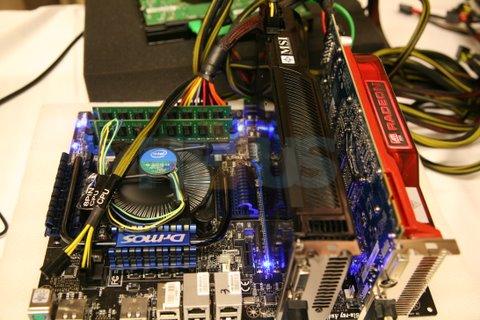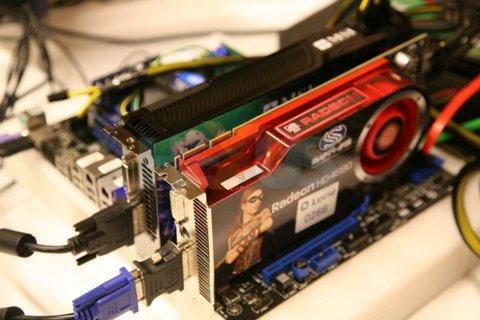Big Bang theory
HYDRA 200 - the 2009 modelLucidLogix is teaming up with MSI to bring the HYDRA technology to the company's Big Bang Intel P55 chipset-based motherboard.
The HYDRA 200 is the new-and-improved model, built on a 65nm process by TSMC, supporting PCI-Express Gen 2, and drawing around 6W when under load. The guts of the chip centre around a Tensilica Diamond RISC architecture that's been augmented with downstream PCI-Express lanes.
LucidLogix will sell various versions of the chip that are differentiated by the downstream (to graphics cards) PCI-Express lane arrangement. These dictate how many cards - and at what bandwidth - can be controlled by the HYDRA chip.





Appreciating that the demonstrations we were privy to were wholly Lucid-controlled, there appears to be significant merit in what the company is doing.
However, a number of questions remained unanswered during our session with the company. We still don't have numbers that define the scaling pertaining to two-, three-, or four-card setups. The additional cost of the HYDRA 200 ASIC is still unknown, although the etail price of the MSI Big Bang, when released, will provide us with the likely premium. Who else will take up the design?
How will AMD and NVIDIA respond to a company that aims to render their multi-GPU business redundant? Both firms have apportioned significant dollars in improving multi-GPU support. Can Lucid reduce the power-draw so that the technology become viable for sleeker laptops? And what of on-GPU physics with a mixture of AMD and NVIDIA cards? Lastly, how does Larrabee, once available, and NVIDIA/AMD play out in the same system?
What we can say is that LucidLogix has considerable IP that needs to be expertly managed if it's going to become a commercial success. We can't wait to find out what the company will do next. Intrigued? We are.







